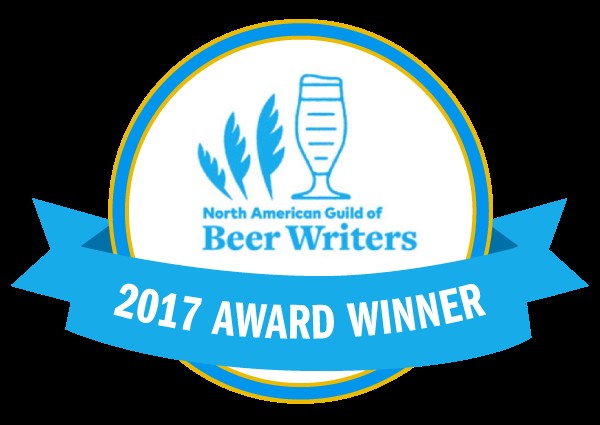My journey into understanding flavor science has given me a strong base for exploring the world of beer, yet not having grown up immersed in brewing culture means I sometimes miss the shared stories and industry lore passed down through generations. This gap in experience recently highlighted a fascinating conflict: my scientific understanding of how beer interacts with Spicy Foods clashed with the common perspective within the beer industry.
It happened during a beer and food pairing workshop with my colleagues from the Beer & Food Working Group. Mentioning the cliché of beer with hot wings, I offhandedly remarked that beer is often a poor choice for spicy food. The reaction was immediate – an audible gasp from the audience. My friend Julia Herz, publisher of CraftBeer.com, was shaking her head, eyes wide with disbelief. I later learned that for many craft beer lovers like Julia, beer is the perfect companion for spicy Thai or Indian cuisine. She insisted that the residual sugar in beer was the key to this successful pairing.
The initial cooling sensation from beer is similar to any cold drink, offering temporary relief. However, as your mouth warms, the burning feeling returns just as strong.
To truly understand this debate, we need to examine all the factors at play when spicy foods meet beer.
How Your Taste Receptors React to Spicy Foods
The burning sensation we experience from spicy foods isn’t actually a taste, but a mouthfeel caused by irritants. These irritants, such as capsaicin in chili peppers, gingerol in ginger, and cinnamaldehyde in cinnamon, trigger a reaction in our taste receptors. When these compounds bind to receptors on the tongue, they initiate a chain reaction that signals the brain about a potential threat. This prompts a pain response: blood vessels dilate, causing redness and sweating, and we perceive a burning sensation. Essentially, our body is telling us to take action to counter this perceived danger. For many, the immediate response is to reach for a beer.
The initial relief beer provides is similar to that of any cold beverage. It temporarily cools the mouth, masking the burn. But this is just a fleeting effect. The capsaicin remains bound to the receptors, continuing to send pain signals to the brain as soon as the mouth returns to its normal temperature. To truly alleviate the burn, we need something that can detach the irritating molecules from these receptors and wash them away.
This brings us to capsaicin’s properties. Capsaicin is hydrophobic, meaning it repels water and doesn’t dissolve well in water-based solutions. Instead, it’s attracted to fats, like those found in whole milk, and even ethanol. These substances can effectively dislodge capsaicin from the pain receptors on our tongue. Beer contains alcohol, and some beer styles have higher alcohol by volume (ABV), suggesting beer might indeed be helpful.
Why Alcohol in Beer Can Complicate Spicy Food Pairings
However, alcohol’s relationship with spicy foods is complex. Alcohol itself is also an irritant and can activate the very same pain receptors that capsaicin targets. In this sense, beer might actually exacerbate the burning sensation. It can amplify the pain signals to the brain, potentially intensifying the overall discomfort. While high ABV might, in theory, dissolve some capsaicin, pulling it away from the receptors, the relatively high water content in beer, even strong beers, dilutes this effect. Beer simply contains more water than alcohol, limiting its ability to effectively neutralize the spice.
Effervescence, or carbonation, is another factor in beer that can complicate pairings with spicy foods. Carbonation can also stimulate pain receptors at certain concentrations, potentially adding to the sensory overload from spicy food. Bitterness, often championed as a counterpoint to spice, is another area where conventional wisdom might miss the mark. Contrary to popular belief among many beer enthusiasts who advocate for hoppy IPAs with spicy food, bitterness might not be beneficial in this context.
An old BeerAdvocate forum discussion highlights this point. While most commenters followed the common line that hoppy IPAs are ideal for spicy dishes, one dissenting voice pointed out that the combination actually intensified the heat, bitterness, and alcohol burn. Scientific evidence supports this perspective. High alpha acid content in hoppy beers, combined with capsaicin, can indeed amplify each other, making both the bitterness and the spiciness more pronounced and potentially overwhelming, along with the alcohol burn. This commenter suggested a sweeter beer, similar to a Riesling, as a better pairing.
The Potential Calming Effect of Sugar in Beer
Following Julia’s insight, sugar emerges as a crucial element in potentially mitigating spice. A quick online search for ways to reduce chili pepper burn reveals sugar as a frequent recommendation, whether in its pure form or in sugary baked goods. A blog post from Sam Adams brewery further explores this idea in the context of beer. In honor of IPA Day, they conducted a small tasting panel with chefs from the Culinary Institute of America, examining how different IPAs paired with medium-hot chicken wings.
The Sam Adams experiment, while not rigorous scientific research, offers interesting insights into the interaction between IPA and spicy chicken wings. Their observations aligned with sensory science: the highest ABV IPA (8.4%) increased the perception of heat. Intriguingly, the mid-level ABV IPA (6.5%) seemed to decrease the heat, while the lowest ABV option (4.5%) made the heat linger. Bitterness, measured in International Bitterness Units (IBUs), could also be a factor. The 8.4% ABV beer had a high IBU of 85, which might have contributed to the amplified heat. The other two IPAs, both at 45 IBUs, didn’t explain the heat difference between the 6.5% and 4.5% ABV beers.
This leads us back to the role of sugar. While the Sam Adams panelists didn’t explicitly mention residual sugar, they noted that the 6.5% ABV IPA, described as having higher malt characteristics, seemed to balance the heat and impart a sweet perception to the pairing. However, scientific literature currently lacks direct evidence confirming that sugar antagonizes spice receptors. No studies definitively prove that sweetness calms spiciness, but research in this specific area might simply be lacking.
Ultimately, IPAs, especially those with high ABV and IBUs, might not be the ideal choice for taming the burn of spicy foods. Yet, many still reach for them. This likely stems from personal preference and habit, rather than scientific synergy. Our enjoyment of a pairing is distinct from our sensory perception of it. Years of conditioning can create a preference for familiar pairings, even if they aren’t scientifically optimal. We tend to favor what is familiar and safe. Therefore, the enduring popularity of IPAs with spicy food might be rooted in habit and familiarity, not in their ability to effectively quell the burn.
The experiences shared by brewers and chefs, who are highly attuned to flavor, are invaluable for formulating scientific hypotheses in sensory science. This is why the intersection of brewing and science is so compelling. Questions about food and beer pairings deserve rigorous scientific investigation to advance both our understanding and the brewing industry. The Sam Adams experiment, though informal, provides a starting point for exploring the potential role of residual sugar in spicy food pairings – a direction that warrants further scientific study.
Now, it’s your turn to contribute your experiences. Share your beer flavor questions or pairing anecdotes in the comments. Your insights could inspire future articles or even become the basis for our next scientific exploration.
Dr. Nicole Garneau
Dr. Nicole Garneau is a geneticist specializing in taste, co-author of the Beer Flavor Map, and co-founder of the beer sensory app DraughtLab. She is a sought-after speaker, has done numerous media interviews and is featured in the book, Beer Pairing the Essential Guide from the Pros. She is a member of ASBC, the Beer & Food Working Group, and on the advisory board member for the Fermentation Science & Technology program at her alma mater Colorado State University. When she’s not speaking or consulting on sensory perception, she’s enjoying time at her day job as PI of the Genetics of Taste Lab at the Denver Museum of Nature & Science.
CraftBeer.com is fully dedicated to small and independent U.S. breweries. We are published by the Brewers Association, the not-for-profit trade group dedicated to promoting and protecting America’s small and independent craft brewers. Stories and opinions shared on CraftBeer.com do not imply endorsement by or positions taken by the Brewers Association or its members.


